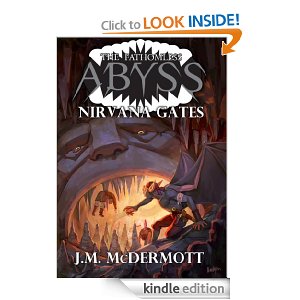 I’ve seen a lot of cover letters in my time. Some ramble, some describe the story, others list thirty small publications, some are misaddressed or rife with typos.
I’ve seen a lot of cover letters in my time. Some ramble, some describe the story, others list thirty small publications, some are misaddressed or rife with typos.
So here’s a cover letter. It’s really all you need to say. Fill in the blanks yourself (and doublecheck to make sure you got the details right.) Italics indicate commentary and should not be included. And always, always – the market guidelines trump anything I say. Read AND follow them. Note: this cover letter is intended to be used when submitting short stories to magazines. You want a different one when submitting to an agent or sending a book to a publisher.
Dear {Editor}: (do make sure you’ve got the right name if you’re addressing them by name)
Attached/enclosed* is my story, “{title}”, ({wordcount}). (“Attached” if it’s e-mail; “Enclosed” if you’re sending by snailmail. Round wordcount up to the nearest 100.)
(The following paragraph is optional if you don’t have publications.)
My work has appeared in {market1 name}, {market2 name}, and {market3 name}. (List your three biggest or most prestigious publications.) In {year}, I attended {workshop name}. (Don’t list stuff if you don’t have it. If you’ve got contest wins that are significant, like Writers of the Future, list that here as well. Again, all of this is optional. This paragraph is intended to make the slush reader pass the work up to the editor by listing reasons you stand out of the herd.)
Thank you for your time and consideration. I look forward to your reply. (If you’re sending by snailmail and include a SASE, mention that here.)
Sincerely, (or the tag of your choice, just make sure it sounds professional. “Peace out,” while charming, may not sound as professional as it could.)
{Your name}
That’s it — that’s all you need. No accolades, no summaries, no previews. The facts and just the facts. Good luck!
Enjoy this writing advice and want more content like it? Check out the classes Cat gives via the Rambo Academy for Wayward Writers, which offers both on-demand and live online writing classes for fantasy and science fiction writers from Cat and other authors, including Ann Leckie, Seanan McGuire, Fran Wilde and other talents! All classes include three free slots.
Prefer to opt for weekly interaction, advice, opportunities to ask questions, and access to the Chez Rambo Discord community and critique group? Check out Cat’s Patreon. Or sample her writing here.







15 Responses
I’d love to see a Tumblr of the worst cover letters in slush. It seems that the college app and corporate resume world has made the cover letter into this big issue it never really needed to be. Thanks for this post, Cat!
Most of them are clueless, and so it always seems cruel to expose them. But cripes. Cripes.
Hi Cat!
Thanks so much for the cover letter tutorial!
I have a question and I’d like to get your take on it please.
Is it annoying or helpful to include your contact information in the body of the cover letter in addition to after your signature (and on your manuscript). It seems like overkill to me, but I’ve read a few places that even though I think it’s an eyesore it’s helpful for editors to have that information multiple places.
Thanks so much, and loved “A Querulous Flute of Bone” on Escapepod!
Cheers,
Jess
Hi Jess!
I personally don’t include contact information in the body of the contact letter (although if it’s being sent snailmail, I follow the standard business letter model, with address up in the righthand corner). I do make sure that the manuscript has it on the first page, though, as per William Shunn’s guidelines for formatting stories (http://www.shunn.net/format/story.html).
Thank you for the kind words about Querulous Flute of Bone! My novella set in the same world just came out last month, A Seed On the Wind. It’s too long for EscapePod, though. 🙂
My letters generally conform to what you have here but it’s nice to see a template. A lot of times I just send my story with the top and bottom paragraph, but the middle paragraph is growing.
That’s what you want, for your optional second paragraph to swell into a tool that will get you out of the slush pile and into the editor’s hands.